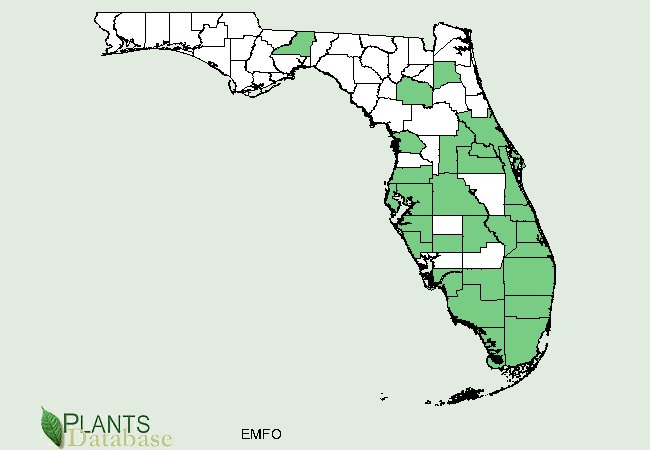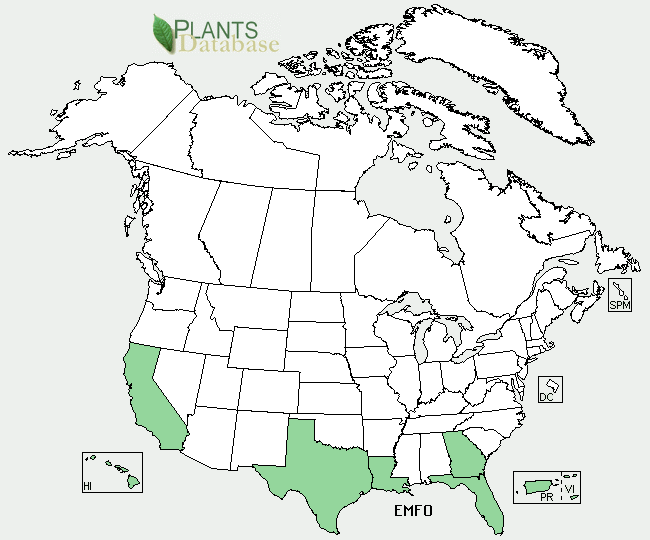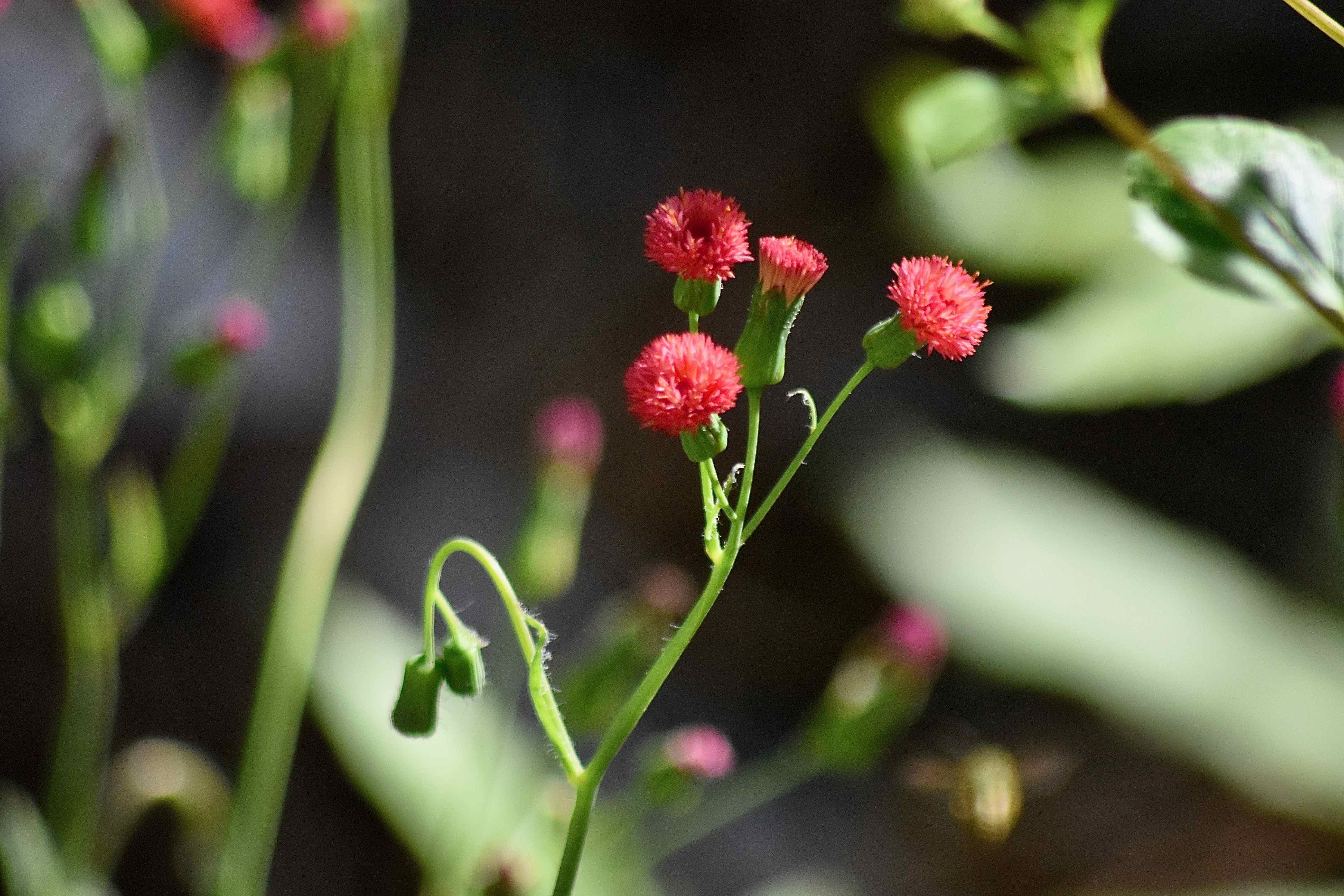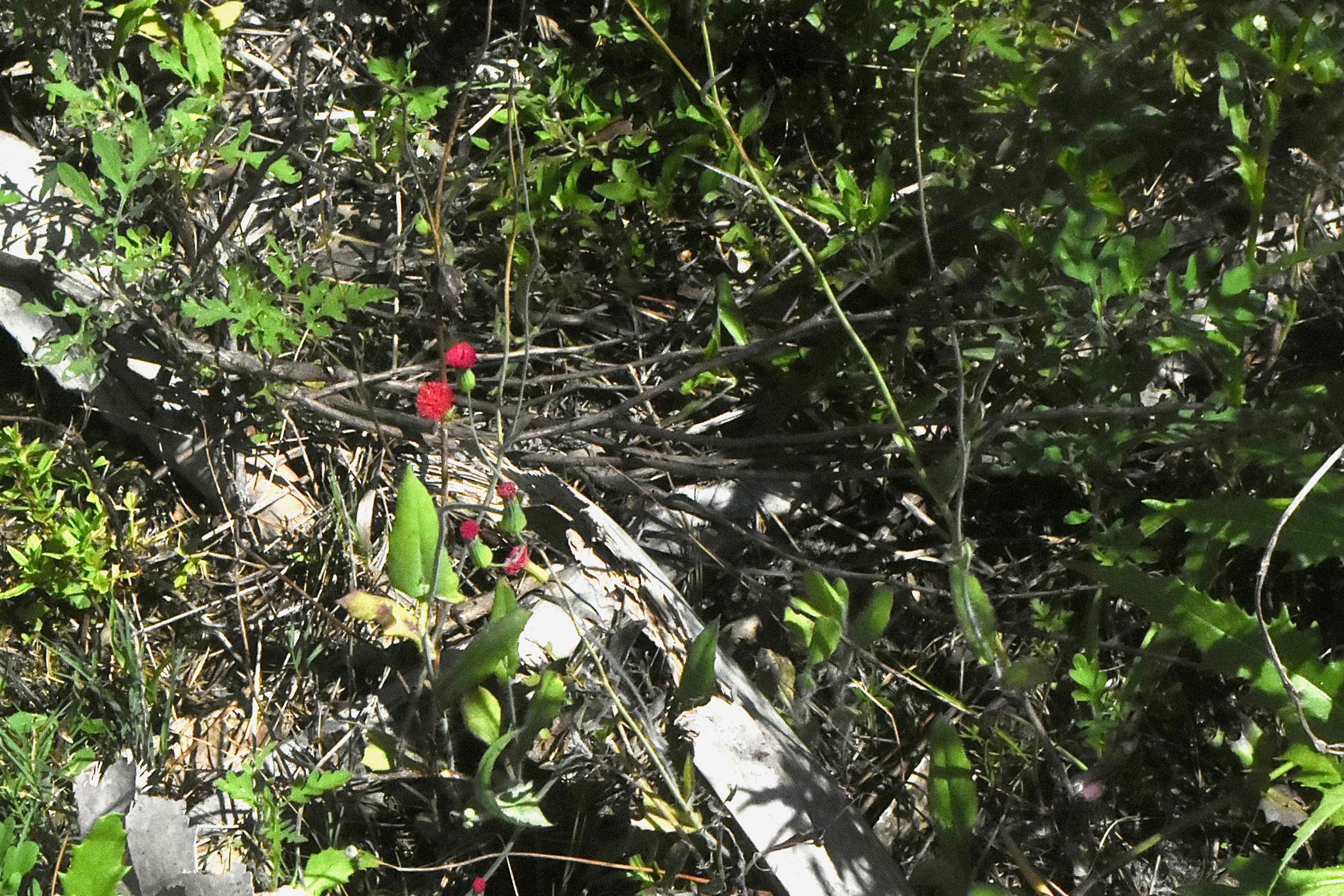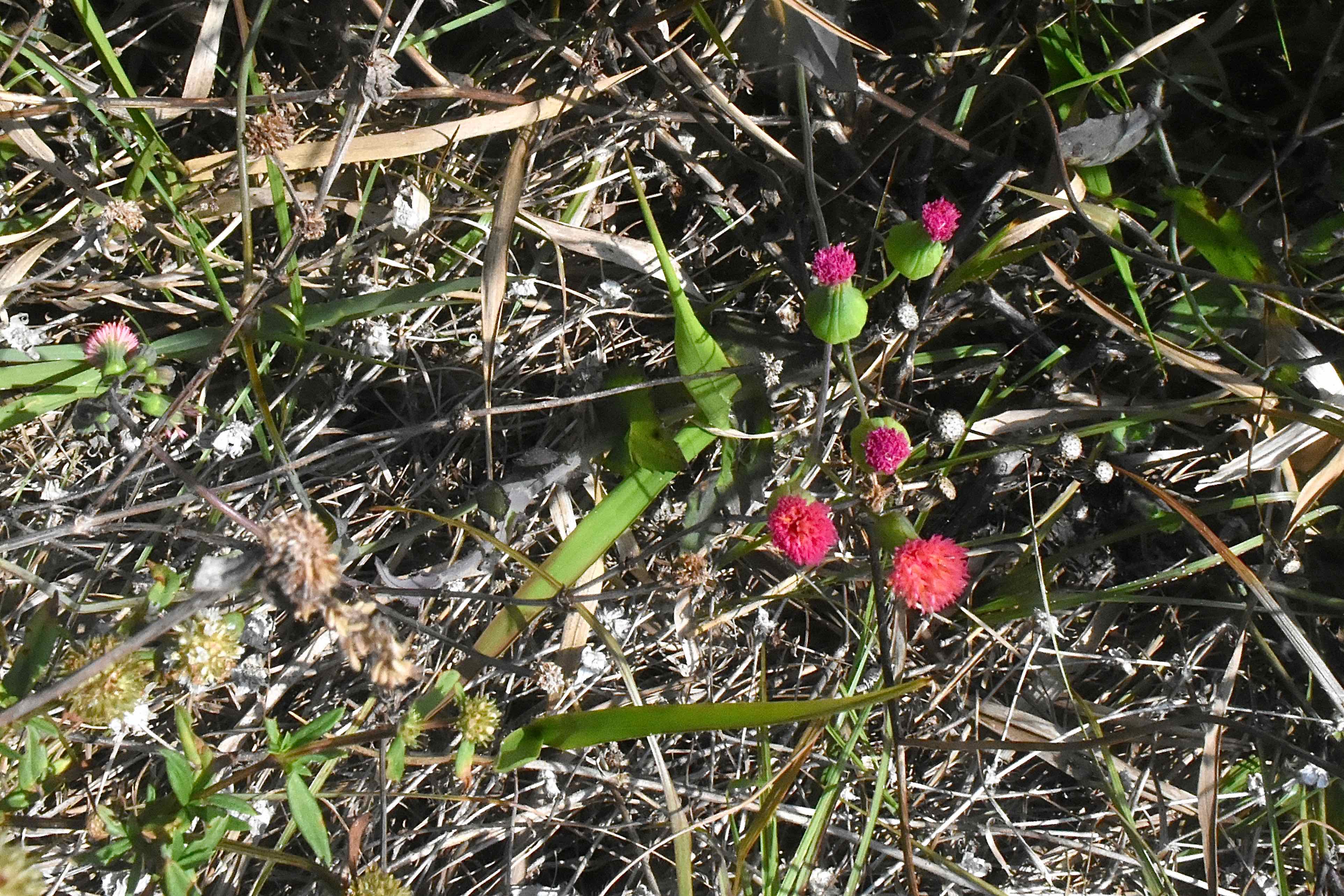
Red Florida tasselflower, photographed, at the Lantana Scrub Natural Area, Lantana, Palm Beach County, in July 2014.
You'd think with a name like Florida tasselflower, you'd be looking at a native of the Sunshine State. You'd be wrong.
Florida tasseIflower, Emilia fosbergii is a native of the Old World, which pretty much means Europe, Asia or Africa. Some theorize "home" for this plant means Africa or warmer parts of Asia. In any regard, it's become a pest in tropical and subtropical places around the globe. In some places, an invasive pest.
Exactly how it became Florida tasselflower eludes us completely, though we're sure there is a reasonable or semi-reasonable explanation. According to the Invasive Species Compendium, it began its worldwide journey in the late 19th century, likely spreading first to the United States and Caribbean. Perhaps the Sunshine State was its first stop, thus becoming Florida tasselflower. It is found throughout the state but mainly from the central Peninsula south into the Keys. It's also found in Georgia, Louisiana, Texas, California, plus Puerto Rico and the Virgin Islands.
The flower is a striking red, resembling a barber's shaving brush, which is the inspiration for several of its other common names. It is on the smallish side given the size of the plant. — it can be two to three feet tall.The flowers sit atop a long, thin stem, each stem having multiple blooms. It is an annual plant, long and gangly, either upright or leaning. The leaves are narrow, arranged alternately on the stem, arrow shaped and both lobed (each lobe coming to a sharp point) and serrated. Seedheads are dandelionesque fluffy white balls that scatter with the wind. And Florida tasselflower is a prolific seed producer — a single plant can produce as many as 5,000 potential offspring in a season.
The flowers are attractive enough that it's grown as an ornamental in parts of the world. The downside is all those seeds that literally can take over a patch of ground.
Butterflies will frequent this plant for the nectar, as will bees. The cinnabar moth (rarely found in the U.S.), uses it as a host plant. In the extremely unlikely case that you're thinking of making a salad from this plant or any other tasselflower, don't. It's rich in pyrrolizidine — highly toxic alkaloids that attack the liver.
By the way, Florida tasselflower has a similar looking cousin, lilac tasselflower, Emilia sonchifolia, that is eaten as a green on the island of Java. In both Costa Rica and Nicaragua Florida Tasselflower is used to treat high blood pressure.
Florida tasselflower is considered an invasive in Mexico, Costa Rica, El Salvador, Dominican Republic, Puerto Rico, U.S. Virgin Islands, Argentina, Hawaii, French Polynesia and the Marshall Islands. It is highly adaptable, takes to full sun or shade and in a variety of habitats, including cultivated fields, making it an agricultural pest. It can be spread by the wind, by contaminated crop seed, contaminated soil and machinery.
Other names include red tasselflower, red tassel flower, Flora's paintbrush, Cupid's shaving brush, rabbit meat, red tassel, purple Emilia, red sow thistle and Florida tassel flower. It is a member of Asteraceae, the sunflower family.
Lantana Scrub Natural Area
Click on photo for larger image
U.S. Department of Agriculture Distribution Maps
